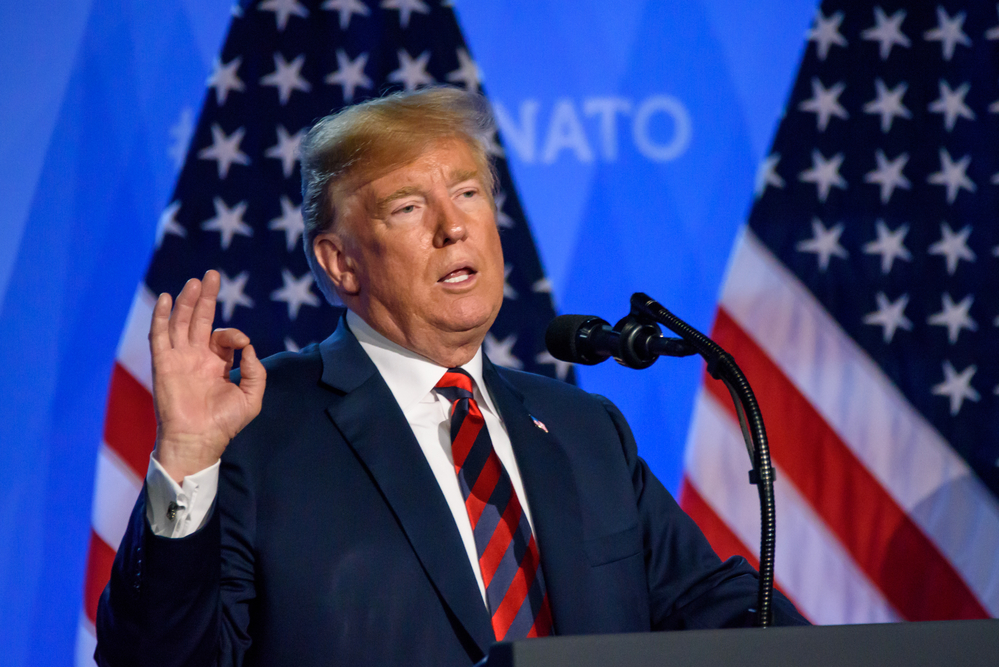

This article is only available to Macro Hive subscribers. Sign-up to receive world-class macro analysis with a daily curated newsletter, podcast, original content from award-winning researchers, cross market strategy, equity insights, trade ideas, crypto flow frameworks, academic paper summaries, explanation and analysis of market-moving events, community investor chat room, and more.
Summary
- Following the presidential debate, Donald Trump is surging in the polls and betting markets.
- A Supreme Court ruling has effectively ensured Trump will not have to stand in new trials before the elections.
- Trump’s vice president (VP) pick by 15 July could indicate his administration’s likely policies.
- The likelihood of President Joe Biden exiting the race is 50%, but time is running out to find winning alternatives.
Market Implications
- I still expect the Fed to remain on hold until end-2024.
Trump Widens Lead, Clocks Legal Victory, to Announce VP Choice
Following the presidential debate on 27 June, Trump‘s nationwide lead over Biden has widened from 1.5% to 3% (Chart 1). Betting markets now give Trump a 56% chance of winning, from 52% before the debate. Pollsters still predict a Republican trifecta (Table 1).
Trump’s lead in swing states has generally increased since the debate. It is roughly unchanged in Arizona, Georgia, and Michigan but higher in Nevada, Pennsylvania, and Wisconsin (Charts 3 and 4).
Meanwhile, Trump clocked a major legal victory with the Supreme Court finding presidents have absolute immunity for exercising their core constitutional powers and a presumption of immunity for other official acts.
In effect, this ensures Trump will not have to stand in court before election day. The sentencing in the New York hush money trial has been postponed to 18 September but may not happen. Trump’s lawyers argue that even though the events under consideration happened before Trump became president, the case is partly built on evidence from his time as president.
Also, even if they still stand after the Supreme Court ruling, Trump’s three remaining cases, namely the Georgia and Federal trials over trying to overturn the results of the 2020 elections and the Federal trial over the mishandling of classified documents, are even less likely to go to trial before the elections.
The Republican convention starts in Milwaukee on 15 July. Trump is expected to announce his VP by then. The most talked about names are Senators James David Vance and Marco Rubio as well as Governor Doug Burgum. The VP choice could signal the broad policy directions of a Trump administration. Senator Vance is viewed as a leader of the ‘new right’ that is against the GOP traditional values of free trade, fiscal conservatism, and internationalism and in favour of tight borders, tariffs, and state intervention. Senator Rubio and Governor Burgum are viewed as closer to the traditional GOP establishment.
50% Chance of Biden Exit
The presidential debate on 27 June further raised voters’ doubts about Biden’s fitness for office. As a result, several prominent Democrats have called on Biden to resign and betting markets are now pricing only about a 50% probability Biden will be the Democratic candidate, down from 85% before the debate (Chart 2).
There is a precedent for a change in the presidential ticket so close to the elections. On 31 July 1972, two weeks after the Democratic convention, Senator McGovern, who was the Democratic candidate in the presidential election, changed running mate. Senator Eagleton was McGovern’s initial VP pick but withdrew due to suffering from depression. McGovern then picked Sargent Shriver, a brother-in-law of President Kennedy, and went on to lose every state except Massachusetts and Washington DC to Richard Nixon.
However, there is no precedent for changing presidential candidate at such a late stage in the process. This is how it could be done.
First, the decision is Biden’s as there is no mechanism in the Democratic statutes to remove a candidate already selected through the primaries. So far, Biden has refused to step down.
Second, the Democrats need a process to replace him. Options include:
- Biden chooses his successor. Biden could instruct his delegates to vote for his chosen successor, though they would be under no obligation to do so. Biden would retain control over his campaign $92mn war chest.
- The delegates to the convention pick his possible successors. Biden would release his delegates and open the convention, new contenders would throw their hats in the ring and campaign ahead of the convention, and the convention delegates would pick the winners.
I think this late in the process and with Biden refusing to leave, the chances of picking a new ticket that would reverse Trump’s ascendency seems slim.
Market Implications
Short-term market implications are limited as the election is still six months away. Also, unlike 2016, a Trump win this time would be less surprising. That said, rising odds of a Trump victory are pushing the Fed to move to no 2024 cuts in the September SEP to preserve policy optionality. I still expect no Fed cut in 2024.
Long-term market implications could be profound if Trump wins, especially with a Republican majority in both House and Senate.
Ratings
Betting Odds
Polls
Google Searches
Fundraising
Market Impact
Calendar
Notes
The 2024 presidential campaign has started early and the stakes for market participants are unusually high as the macro policies of a second Biden or Trump administration would differ markedly. This Elections Monitor updates investors on the progress of each candidate. It is updated every other week and more often if needed. The monitor has five parts.
Betting Odds (Charts 1-2)
I focus on a Trump/Biden rematch because of the overwhelming odds that they will each get their party nomination. Also, a change in candidate prior to the election is unlikely but possible. I monitor this risk through the difference between the odds of a party victory and that of the candidate. For instance, the recent widening of the difference between the odds of a Republican and a Trump victory could signal a greater, though small, risk of Nicky Hailey winning the nomination.
Polls (Charts 3-6)
I include swing state polls (Charts 3-6). Swing states could swing either Republican or Democrat and typically include Arizona, Georgia, Michigan, Nevada, Pennsylvania, and Wisconsin. They account for 77 votes of 538 (270 votes are required to win) and pollsters generally agree the winner must take most of them.
Fundraising (Charts 8-9)
I monitor the funds each candidate raises and spends. Even though they are only a fraction of the funds Political Action Committees (PAC) raise, they still contain information on the popularity of the candidates. The data is updated monthly.
I use Google searches as proxies for the public interest in the elections, with Taylor Swift searches as the benchmark.
Market Impact (Chart 10)
The performance of the stock Trump Media and Technology Group stock could become a proxy for market views on the odds of a Trump victory.
Calendar
The calendar provides the schedule of each party’s primaries, the steps to inauguration, and a calendar of Trump’s ongoing legal battles. These are:
- Supreme Court ruling on whether Colorado and Maine can keep him off the ballot.
- New York civil fraud trial.
- Defamation suit from writer E. Jean Carrol.
- Georgia racketeering suit against Trump and associates for trying to overturn the 2020 election.
- Federal trial over trying to overturn the 2020 election.
- Federal trial over the mishandling of classified documents.
- New York 2016 hush money.
Trump’s legal calendar is evolving and will be updated as information becomes available.
.
Dominique Dwor-Frecaut is a macro strategist based in Southern California. She has worked on EM and DMs at hedge funds, on the sell side, the NY Fed , the IMF and the World Bank. She publishes the blog Macro Sis that discusses the drivers of macro returns.
.
